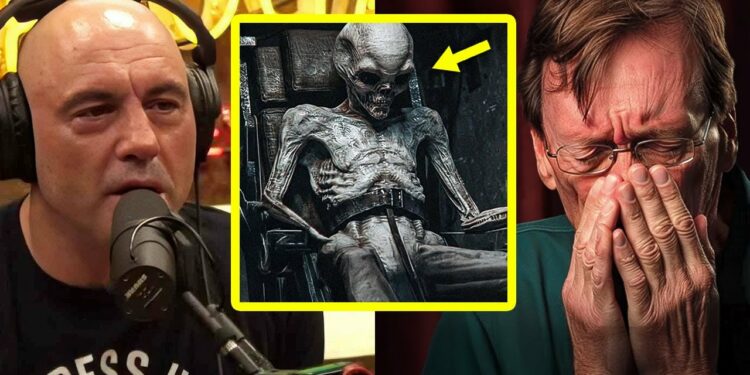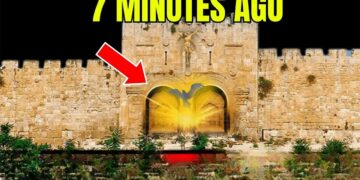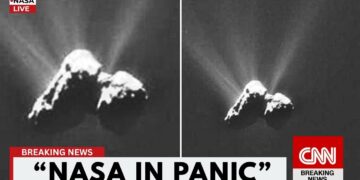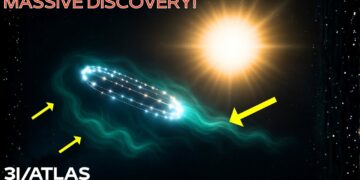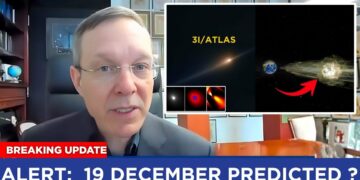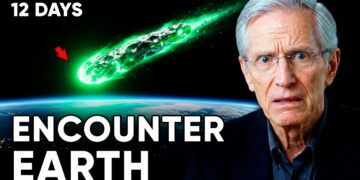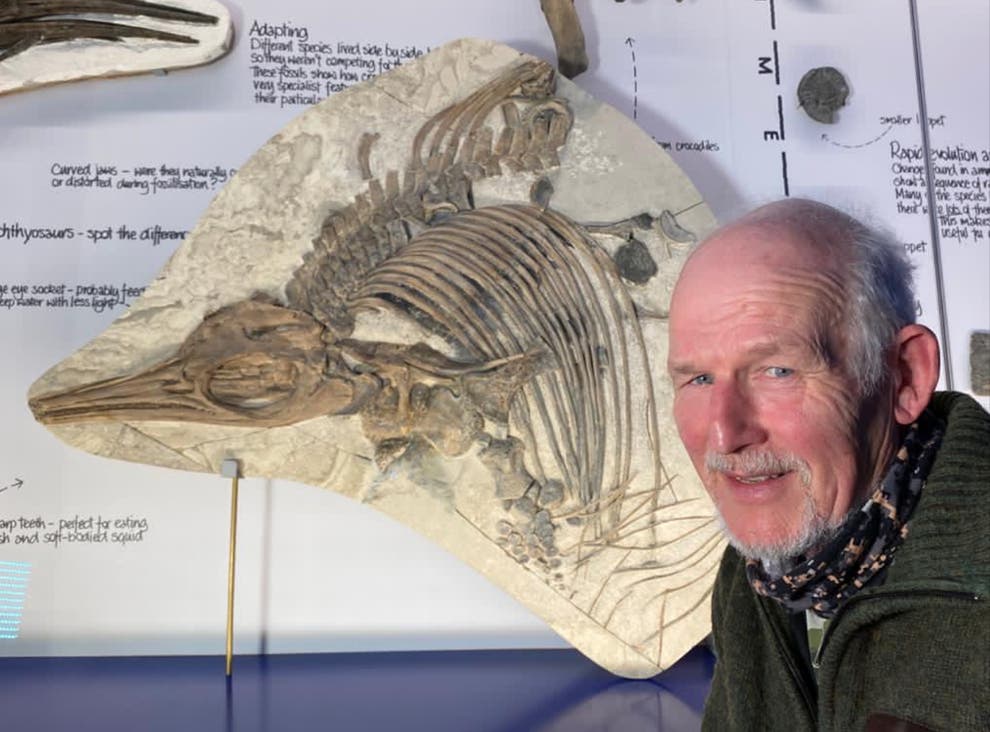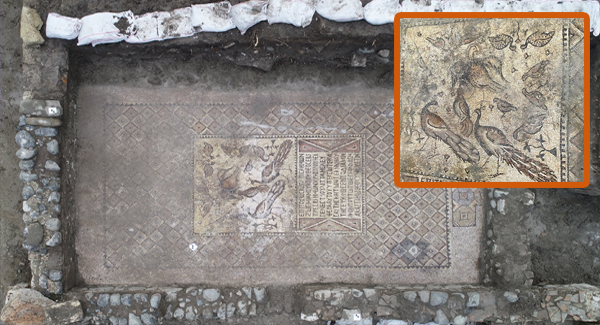Bob Lazar has been a polarizing figure in UFO lore since 1989, when he claimed to have worked on reverse-engineering alien spacecraft at S4, a secretive site near Area 51. His allegations of advanced extraterrestrial technology, powered by a stable isotope of element 115, have sparked decades of debate. Recent UFO drone sightings over New Jersey and New York have reignited interest in Lazar’s story, prompting speculation about whether these events connect to the technologies he described. This account explores Lazar’s claims, the FBI raid on his facility, the significance of element 115, and his reaction to modern UFO phenomena, alongside the broader context of his revelations.
The FBI Raid and Element 115
Rumors persist that the FBI raided Lazar’s facility, allegedly searching for a stable sample of element 115, which he claimed to have smuggled from S4. According to Lazar, this element, then theoretical, powered an anti-gravity propulsion system in alien crafts. A 1980s video, reportedly shown by journalist George Knapp, purportedly depicted Lazar demonstrating how element 115 bent light, exhibiting bizarre physical properties. Shortly after the raid, element 115—later named Moscovium—was synthesized in Russia using a particle collider. However, the synthesized version was unstable, decaying rapidly, unlike the stable isotope Lazar claimed enabled gravity manipulation. This discrepancy fuels speculation: did extraterrestrial beings from a different environment possess a stable isotope with unique properties?
Lazar described element 115 as central to a reactor that, when bombarded with radiation, generated a gravity field, allowing crafts to “slingshot” through space. Elements often have stable and unstable isotopes, like hydrogen’s deuterium (stable) and tritium (radioactive). Lazar’s claim suggests an alien civilization mastered a stable isotope of 115, unknown to human science, capable of revolutionary propulsion.
Lazar’s Allegations and Area 51
Lazar’s core claim is that in the late 1980s, he worked at S4, a hidden facility near Area 51, analyzing nine extraterrestrial spacecraft. He described a “sport model” craft using an anti-gravity system powered by element 115, enabling instantaneous acceleration, silent hovering, and abrupt direction changes—maneuvers defying conventional physics. He also claimed to have seen a photograph of an alien autopsy revealing a singular organ and was told the human genome had been altered, though he remains skeptical of these details.
Skeptics question Lazar’s credibility, citing his association with John Lear, a UFO enthusiast with outlandish claims like lunar bases and a “soul-catcher” on the moon. Lear, son of Learjet creator Bill Lear, was linked to disinformation figures like Bill Cooper, author of Behold a Pale Horse. Some speculate Lear was a “useful idiot” or deliberate provocateur, possibly fed information by figures like Admiral Wilson to leak secrets strategically. The Wilson Memo, a purported 2001 document detailing a conversation between Admiral Wilson and a scientist at EG&G Special Projects, allegedly confirms private industry’s control over UFO programs, denying even high-ranking officials access. George Knapp asserts the memo’s authenticity, lending credence to Lazar’s claims.
Lazar’s background adds complexity. Lacking traditional credentials, he reportedly impressed physicist Edward Teller with a homemade ramjet, securing his S4 role. Critics argue his unconventional profile made him an ideal candidate for a “limited hangout”—a controlled leak with plausible deniability. Harassment followed his disclosures: break-ins, open windows, and threats, which Lazar and Knapp attribute to government intimidation. Six individuals offering Knapp information about Area 51 were visited and silenced, including a stenographer who overheard discussions about crashed saucers at Holmes and Narver, a defense contractor.
The 1989 Breakthrough and Journalism
George Knapp, a respected Las Vegas journalist, broke Lazar’s story in 1989 on KLAS-TV. Initially skeptical, Knapp’s interest was piqued by John Lear, who introduced UFO documents and hinted at Lazar’s involvement. After a last-minute guest cancellation, Knapp interviewed Lazar, who, feeling threatened, revealed his S4 experiences with his face obscured. The interview detailed nine alien crafts, extraterrestrial technology, and his fear for his life, sparking massive public interest. Subsequent investigations, including a visit to Los Alamos National Laboratory where Lazar navigated confidently, bolstered Knapp’s belief in his story. An eight-month “crash course” in ufology and interviews at a MUFON symposium convinced Knapp of a broader UFO cover-up.
Recent UFO Sightings and Lazar’s Reaction
The 2025 New Jersey and New York UFO drone sightings—glowing orbs and crafts with physics-defying maneuvers—mirror Lazar’s descriptions of S4 technology. Lazar reacted with cautious intrigue, suggesting these could be the same crafts he studied or human-made replicas from successful reverse-engineering. He noted their silent, turbulence-free motion, consistent with a gravitational propulsion system isolating crafts from environmental forces. These sightings align with his claims of instantaneous acceleration and precise direction changes.
Lazar sees the sightings as evidence of a slow disclosure process, noting the U.S. government’s recent openness about UAPs (unidentified aerial phenomena), like the 2004 USS Nimitz incident. He believes public stigma is fading, driven by high-quality footage and credible witnesses. However, he warns of the technology’s dual potential: revolutionary for transportation and energy, catastrophic if misused. Lazar questions who controls these drones—government, private industry, or extraterrestrials—and why they’re appearing now, possibly signaling deliberate exposure.
Broader Implications
Lazar’s story raises profound questions about secrecy, power, and humanity’s future. The Wilson Memo suggests private aerospace firms, not governments, control UFO technology, evading oversight. If true, this could explain the secrecy and intimidation Lazar faced. The stable element 115 he described remains unverified, but its theoretical properties challenge physics, hinting at alien origins or advanced human breakthroughs. The New Jersey and New York sightings, combined with global reports from Brazil to Japan, suggest a coordinated phenomenon, possibly extraterrestrial observation or human testing.
Lazar emphasizes transparency, arguing that such technology could transform society but risks destabilization if controlled by a few. He sees the sightings as a call to investigate rigorously, embracing the unknown with curiosity. The universe, he says, is more complex than we imagine, and these events are a step toward understanding our place in it.
Conclusion
Bob Lazar’s claims—element 115, alien crafts, and S4—remain contentious, supported by some evidence (like the Wilson Memo and Knapp’s investigations) and challenged by skeptics citing his ties to figures like Lear. The FBI raid, harassment, and recent UFO sightings lend weight to his narrative, suggesting a hidden truth about advanced technology. Whether extraterrestrial or human-made, these phenomena demand scrutiny. Lazar’s story, amplified by the New Jersey and New York drones, underscores humanity’s quest to unravel cosmic mysteries, urging us to balance open-mindedness with critical inquiry in pursuit of a truth that could redefine our world.

